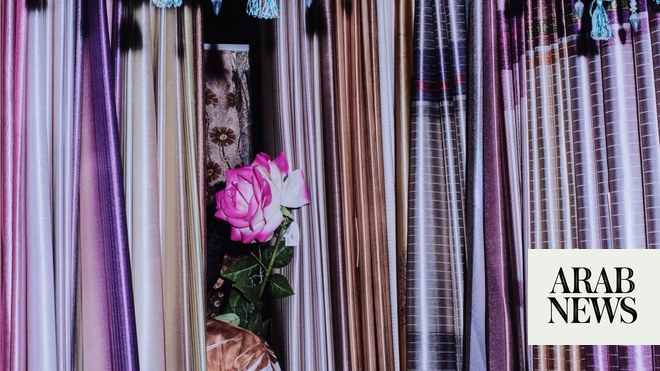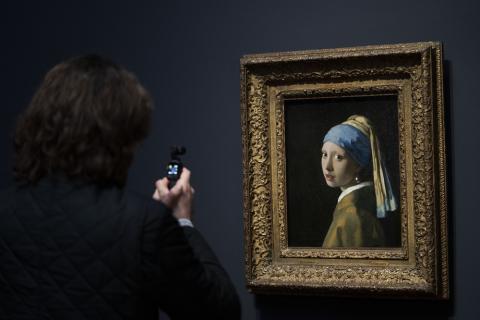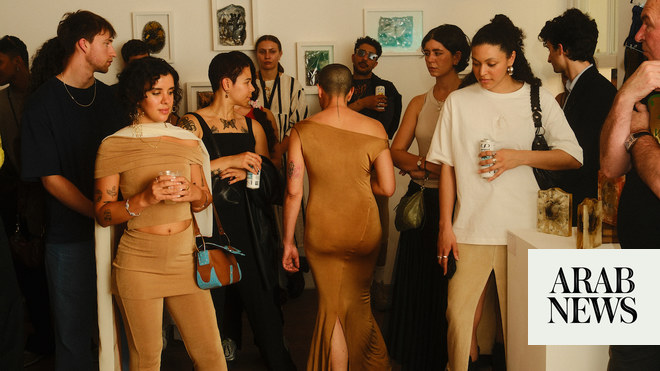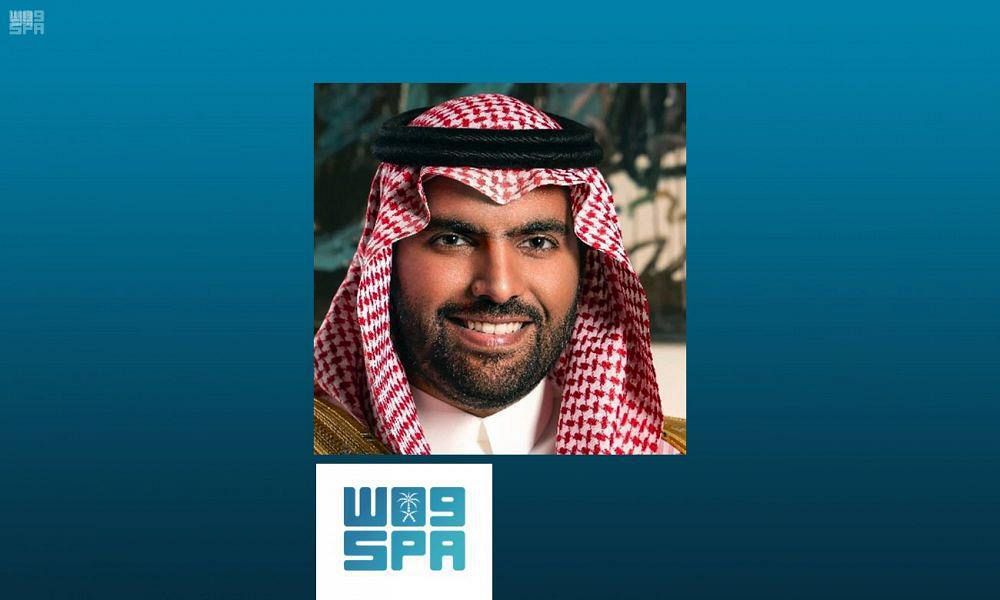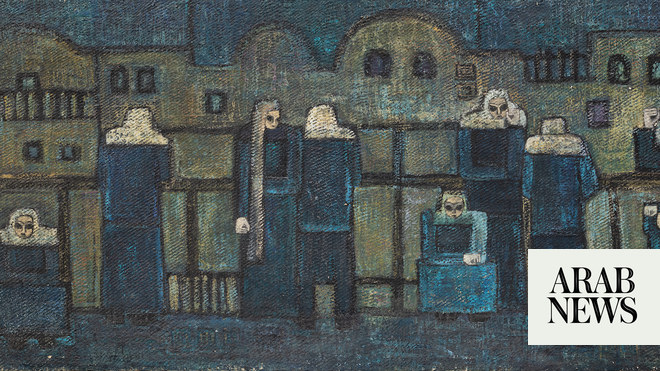
Highlights from Christie’s ‘Modern and Contemporary Work of the Arab World’ show
DUBAI: This summer, London-based auction house Christie’s is showcasing what is billed as the largest display of Arab art to date in the British capital. Running until August 23, the “Modern and Contemporary Work of the Arab World” show is divided into two sections: “Kawkaba,” exhibiting 100 modern pieces from the UAE’s Barjeel Art Foundation, and “Emirati Art Reimagined,” highlighting the work of the late Emirati artist Hassan Sharif and the Gulf country’s contemporary talents.
For the latest updates, follow us on Instagram @arabnews.lifestyle
The exhibition features a variety of artistic mediums, offering insight into what creativity looked like in the region over a span of eight decades from 1939 to 2023. “It’s an educational project: If we have one visitor who comes and just discovers one tiny artwork that they like and remembers the artist’s name, I think I will be happy personally,” Dr. Ridha Moumni, the Tunisia-born deputy chairman of Christie’s Middle East and North Africa, told Arab News.
“We’re trying to establish a bridge that brings all these collections to London, making them available to a general public that is not familiar with Arab art,” he added. “As Arabs, we are very proud when we have the opportunity to showcase our art, which means showcasing our culture and history. It’s an honor and privilege. And to highlight the art of the region in our headquarters is symbolic.”
“Kawkaba” contains an equal amount of works by female and male artists — a decision taken by Sultan Sooud Al-Qassemi, the Emirati art collector and founder of the Barjeel Art Foundation and a firm supporter of equality in the arts.
“I was told that it’s not possible to have an equal display of male and female artists in the region, because there were logistical, realistic, and factual reasons that would stop me from doing that. Male artists got more scholarships and opportunities. So, how can you have a gender-balanced display when men had more opportunities to learn professional art production than women?” he told Arab News. “But what we learned is that women were actually being more creative. They started doing art using henna on paper, ceramics, glasswork, and batik. I think they were doing this partially to counterbalance the lack of opportunities that they had. So the list grows if you only look for it. The lazy answer would be, ‘There aren’t any female artists.’ But if you apply yourself, you’ll find there are so many more that we didn’t know about in the Arab world.”
In Arabic, the term ‘Kawkaba’ means ‘constellation,’ alluding to a group of star artists. But a larger meaning exists behind it. “This is a constellation of artists, but they’re also part of a greater galaxy of artists that exist out there,” Al-Qassemi explained.
Here, Al-Qassemi and Ridha discuss some of the show’s highlights.
‘Untitled’
Muazzez Rawda
Born in Baghdad in 1906, Rawda was just 20 years old when she moved to Lebanon. She established herself in Beirut, making it her home for 60 years. Rawda reportedly opened the first kindergarten in Baghdad and was the first woman to obtain a driving license in Lebanon. She began pursuing art late in life. “What I admire about her is that she started creating art in the Fifties, when she was 50 years old. She is someone who entered the art world very late and started doing sculptures,” noted Al-Qassemi. One of them is this rare 1960s abstract, made of marble.
‘Awaiting the Return’
Maysoun Jazairi
This Syrian artist was very active between the late-Sixties and Nineties. She was influenced heavily by the region’s political turbulence, including the 1967 War and the 1973 Arab–Israeli War. As seen in the angular “Awaiting the Return,” women are at the heart of her works. “She reflected very much on the role of women as defenders of the homeland. She depicts women with weapons, for example,” said Al-Qassemi. “This work is from 1970 and is a reflection of all the people who were exiled, waiting to go back home. This is really a story that was perpetuated since the 1940s in the Arab world. A person on Twitter reshared my tweet of Jazairi’s work and said, ‘As if Jazairi painted it in the Syria of 2021. Fifty years later, there are still people who are exiled from their homes.’”
‘Untitled’
Joyce Mansour
Mansour was an Egyptian Jew and surrealist poet who was born in 1920s England. “For us at Barjeel, Joyce represents the emphasis both on women and religious minorities of the region,” said Al-Qassemi. Mansour also entered the arts late in life, creating ‘objets méchants’ (nasty objects) made of screws and nails. “She created this amalgamation that she felt reflected the reality of life that she wrote about as a poet. For her, this is an extension of her poetry,” explained Al-Qassemi. “She’s created a physical manifestation of her poetry that, for some people, is unsettling.”
‘Curtain Shop’
Farah Al-Qasimi
“I think the fact that she’s coming from different backgrounds — studying at Yale, being a photographer and a musician, doing video performance, living between the US and the UAE — shaped the very sensitive and relevant eye that she has,” Ridha said of the Emirati photographer and video artist. In her imagery, she captures highly patterned and bright interior scenes that reflect Emirati culture today. The concealed face, often hidden with objects, is a common element in her work.
‘Four Rectangles’
Hassan Sharif
Sharif, who died in 2016, was a figurehead of the Emirati art scene in the Eighties. This colorful 1985 painting is a rare work by the conceptual artist, who was influenced by the notions of form, time, and mathematical systems. “He works in an almost industrial way to build his canvas. I like the way he uses and mixes his colors. He’s a real colorist,” observed Ridha. “I have a feeling he had a very cheeky mind — in a good way. There’s something of his personality in his canvas. It’s called ‘Four Rectangles,’ but there are three canvases aligned in one rectangle.” Featuring ‘Four Rectangles’ in a UK show feels like a full-circle moment, since Sharif created it after he returned from England, where he was inspired by British constructivist art.
‘La Mariée’
Safia Farhat
A pioneering artist in post-independence Tunisia, Farhat was a ceramicist, teacher, weaver, publisher, and activist. “She is a symbol for Tunisia,” Ridha said. “She was influenced by the politics of Habib Bourguiba (Tunisia’s first president); to empower women and give them a new status for their rights.” In ‘La Mariée’, a bride is dressed in vibrant traditional clothing that is full of symbols. “Farhat participated in decolonizing painting,” Ridha explained. “‘La Mariée’ was a way to rediscover Tunisian heritage and identity and to create a new iconographic language at a time when art was part of nation-building.”




